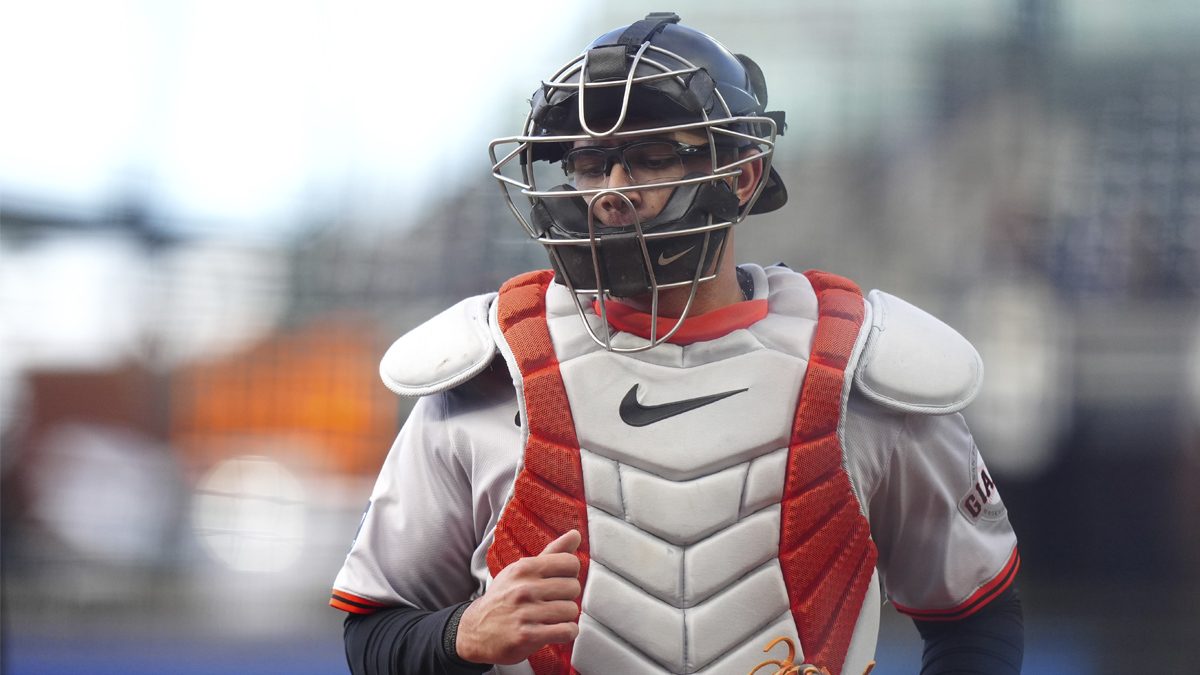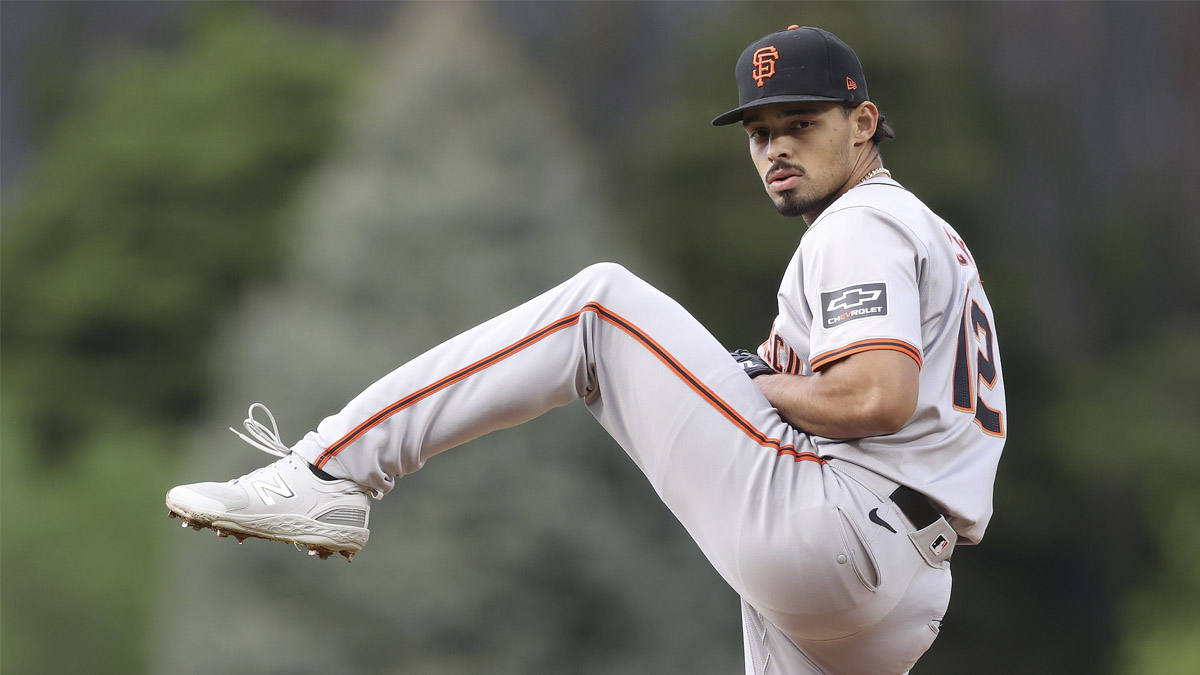SAN FRANCISCO -- When Kyle Harrison took the mound at Oracle Park late last month for his home debut, his focus was on getting quick outs. The path of least resistance proved to be a familiar one.
Harrison piled up strikeouts at a prolific rate en route to the big leagues and he whiffed the first five Cincinnati Reds on August 28, delighting the home crowd. The rookie became the first Giant since Randy Johnson in 2009 to start a game with five consecutive strikeouts, and he did it in a very Randy Johnson way. All five at-bats ended on Harrison's fastball, which in just three starts has proven to be one of the elite four-seamers in the game.
Harrison has thrown his fastball 68.8 percent of the time in the big leagues and already has 17 strikeouts with his go-to pitch. Among his victims so far are Trea Turner, Nick Castellanos, J.T. Realmuto, Elly De La Cruz and Fernando Tatis Jr. He also has thrown fastballs past Manny Machado and Bryce Harper early in counts, with Harper taking such a big cut that he dropped to one knee and then hopped out of the batter's box as Patrick Bailey threw the ball back to Harrison.
Stay in the game with the latest updates on your beloved Bay Area and California sports teams! Sign up here for our All Access Daily newsletter.
Bailey has been waiting to call and catch Harrison's fastball in the big leagues since the two first linked up after the 2020 draft. Following Harrison's debut in Philadelphia, Bailey compared the pitch to the fastball that has made Josh Hader a five-time All-Star closer.
"It's about as good as it gets," he said. "It's about as good as it gets."
When a reporter asked how the pitch is so effective given that it's not 100 mph, the catcher smiled.
"Ehh, it's 98," he said, laughing.
San Francisco Giants
Harrison hasn't quite hit that mark yet, topping out at 97.6 mph through his first 170 fastballs in the big leagues. The pitch has averaged 94.2 mph, which isn't all that notable in today's game, but the Giants view it as an 80-grade pitch, the highest on the traditional scouting scale.
While Harrison gave up two homers on fastballs in San Diego, it's hard to quibble with the grade. Through three starts, opposing hitters are batting just .184 against his fastball. That ranks 11th among starters who have thrown at least 150 four-seamers, and the top 10 includes names like Marcus Stroman, Shohei Ohtani and Jacob deGrom.
What's putting Harrison in that company despite velocity that puts him more in line with the league average? For Bailey, it's the complete package.
"I would say first and foremost, it's a very unique arm slot. It's low three-quarter, which is creating a lot of vertical approach angle," he said on an interview for the Giants Talk Podcast. "As the arm slot is lower, the perception of the ball looks like it's staying on plane and not going down. And then combine that with average to above-average carry, and then he's also getting average to above-average horizontal (movement). So it's a two-plane fastball with approach angle up to 98 mph from the left side. So … it's a good pitch. It's a good pitch."
In more basic terms, Harrison simply has tremendous late life on his fastball. Bailey said the reaction of some hitters is "just, like, astonishment." You expect the ball to end up in a certain spot, but Harrison has an ability to keep it on a flatter plane and miss bats, especially at the top of the zone.
"From a hitter's perspective, you feel like your timing is good on the fastball and you swing right through it and you go look at video and you're underneath it by an inch or two," Bailey said. "You're like, holy smokes, I'm trying to hit the top of the baseball and I still can't get to it."
Harrison has always known he had a good fastball, but at De La Salle in Concord, he assumed the swings he was getting were because of his velocity. He was up to 93 mph before the draft and added velo in the low minors, and that's when he noticed the pitch might help him separate from the pack. In 279 1/3 minor league innings, Harrison struck out 452 batters.
"As soon as I got into pro ball I started seeing some swings up in the zone," he said on Thursday's Giants Talk Podcast. "The Giants just do a great job with player plans and what would work best for you, so they kinda gave me a rough outline of where it would look like and I could pitch to my strengths. I just rode that for the past three years or so that I've been with them. I haven't really changed much. I've been true to myself."
That's exactly what the Giants wanted. When Harrison was drafted in the third round in 2020, amateur scouting director Michael Holmes said the staff loved his deception. Brian Bannister, the organization's director of pitching, said something else jumped out, too.
"I remember the thing that stood out when I first saw video of him at De La Salle was just how low he can (go) and still function with his lower half to the ground," Bannister said. "Most pitchers, when you get that low, your hips lock up and you can't rotate. He just has a natural ability to really get low to the ground and still rotate very powerfully. It's almost like a pitching machine with a shorter tripod."
Harrison is 6-foot-2, but he gets so low in his delivery that his left knee nearly scrapes the mound. At about 5 feet, 2 inches, Harrison has the third-lowest release point among left-handed starters, but he also gets down the mound well, ranking in the 84th percentile in extension.
"He actually shares some characteristics with (Sean) Manaea, but Manaea is taller with big extension and Kyle is much lower with more of an upshoot quality," Bannister said. "They don't have high spin rates. It's really the fact that they get good extension, hide the ball, they're left-handed and there's some velo behind it."
Pitching coach Andrew Bailey and Bannister are confident that Harrison will eventually have more of a well-rounded mix. He has primarily been a fastball-slider so far, but he continues to refine a hard cutter and the staff believes his changeup has the makings of a plus pitch.
For now, Harrison is breaking in by leaning heavily on a pitch that has already fooled some of the National League's best hitters. It's a fastball that Giants coaches compare to Hader’s and Craig Kimbrel’s, although Harrison is a starter capable of throwing it 60-70 times a game. In that respect, the Giants are hopeful Harrison ends up resembling some of the hard-throwing left-handers he patterned his game after.
"I watched Chris Sale growing up my whole life. I loved that big sweeper that he throws and the fastball up in the zone. It was just watching power lefties, even Randy Johnson from back in the day. Guys like that," Harrison said. "I loved watching those guys just attacking dudes."


